

In the days and weeks immediately following the sinking of the Titanic, it was widely rumored that the ship's First Officer, William M. Murdoch, had taken his own life with a revolver shortly before the vessel foundered. For a long time these rumors were spoken of in almost hushed tones, with very few people wanting to publicly commit themselves to the notion that the stories about Murdoch might be true. As a result, and as the years went by, these suicide rumors slowly began to be out-and-out disbelieved by many Titanic researchers, and it eventually became an article of faith that the stories about Murdoch were false and had originated with sensation-hungry newspaper reporters who'd created them in a misguided attempt to make a good story better.
In 1997, however, James Cameron released his blockbuster film "Titanic" which drew on a number of 1912 sources which support the contention that First Officer Murdoch did indeed take his own life. Public furor in certain quarters was immediate, and people with vested interests in Murdoch's reputation (family members, citizens of his home town of Dalbeattie, etc.) came out of the woodwork to protest Cameron's treatment of Murdoch and to insist that the "home town boy" had died "an honorable death" and had not committed suicide. The end result of this hubbub has been the creation of a modern-day website (which seems to be affiliated in some way with Dalbeattie) whose webmaster has taken it upon himself to defend Murdoch's reputation by "proving" that the First Officer did not take his own life.
Now this is all well and good, but when a webmaster takes it upon himself to publicly "prove" a specific historical premise, one expects that webmaster to first verify the accuracy of his evidence before he places that evidence before the public. If the webmaster cannot verify the accuracy of his information, he should at least respect his readers enough to point out and discuss the pros and cons of his evidence instead of force-feeding it to them as if its authenticity were already established. Sadly, in his zeal to fulfill his mission of "proving" that William Murdoch did not commit suicide, the webmaster in question has utterly failed to do this and has presented a great deal of disinformation on his website which is grossly inaccurate and completely misleading. The most revealing part of all this is that the webmaster has declined to correct his many errors despite having been repeatedly provided with correct information by the present author, Dave Billnitzer, Tad Fitch, Bill Wormstedt and a number of other researchers. (Indeed, he has even published statements suggesting that the present author's historical writings have been prompted by a financial interest in ruining William Murdoch's reputation.) The webmaster claims he has "insufficient time" to make factual corrections to his website -- yet on several occasions he has somehow found the time to add additional "questionable" information about Murdoch to the site. This makes it clear that the Murdoch website is less concerned with historical accuracy than it is with furthering its own agenda -- i.e. making the public believe that William Murdoch did not commit suicide.
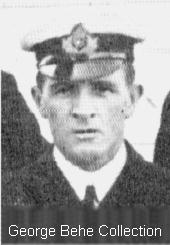
It is not the purpose of the present author to "prove" that First Officer William Murdoch did in fact commit suicide, since there is currently not enough eyewitness testimony available to establish the identity of the officer who was seen by several eyewitnesses to have taken his own life. Instead, the purpose of this present webpage is merely to alert legitimate researchers to the many inaccuracies of the Murdoch website and to correct the gross historical errors which are presented there as being true. The only way legitimate researchers can form an accurate opinion about whether a specific officer did -- or did not -- commit suicide is if they have access to *accurate* information on the subject (after which they can arrive at their own informed conclusions rather than be forced to rely on one-sided evidence which is apparently driven by an agenda.)
The present author will do his best to point out the disinformation that the Murdoch website is currently promoting in its effort to prove Murdoch's 'innocence.' This task has been rendered difficult in that the information which purportedly 'documents' the non-suicide death of Titanic's First Officer is scattered far and wide across the Murdoch website. Indeed, it is this very scattering that makes the information so difficult to ferret out, since a single dubious 'fact' hidden within a string of otherwise reliable information will remain unnoticed by most people and will probably be accepted by them as being true. Nevertheless, let us begin our examination of the various and sundry claims made by the Murdoch website. (Once we have concluded our examination of the site, the reader will be provided with a separate -- and *reliable* -- source of information about William Murdoch and the entire suicide question.)
The heart of the Murdoch website's defense of Titanic's First Officer is the content of a 1954 interview granted to researcher Ernest Robinson by Harold Bride (formerly the Titanic's junior wireless operator.) Although a verbatim transcript of this interview has not yet been made available to objective researchers, its content has been summarised and posted on the Murdoch website by its webmaster. As in my previous analysis of the claims made by Leslie Harrison in his defense of Captain Lord, I will summarise each of the Murdoch webmaster's claims and will then provide critical analysis of those claims for the benefit of the reader.

ANALYSIS: The above claim was based on the 1954 interview that Harold Bride granted to Ernest Robinson and seems -- on the face of it, anyway -- to be authoritative. What the webmaster fails to tell his readers, however, is that this interview contradicts every other piece of information we have concerning Harold Bride's movements and activities that night.
The simplest way to refute the claims made in Bride's 1954 interview is for us to examine Bride's own official report to the Marconi Company that he wrote immediately after the disaster. That report states:
"Leaving our cabin, we [Bride and Senior Operator Jack Phillips] climbed on top of the houses comprising the officers' quarters and our own, and here I saw the last of Mr. Phillips, for he disappeared walking aft.
"I now assisted in pushing off a collapsible lifeboat [i.e. Collapsible B], which was on the *port* [author's emphasis] side of the forward funnel, onto the boat deck. Just as the boat fell I noticed Captain Smith dive from the bridge into the sea.
"Then followed a general scramble down on[to] the [port] boat deck, but no sooner had we got there than the sea washed over. I managed to catch hold of the boat we had previously fixed up and was swept overboard with her."
Bride's official report to the Marconi Company is confirmed by the testimony he gave at both the Senate and British Titanic Inquiries. Despite the present claims made by the Murdoch website, Harold Bride was on the opposite side of the ship from First Officer Murdoch when the bridge submerged and had no idea how Murdoch spent the final moments of his life.
The present author has asked historian Don Lynch for his opinion of the information that Harold Bride is said to have relayed to Ernest Robinson in 1954. Lynch's observations are as follows:
"In the course of my research and writing 'Titanic -- An Illustrated History' I encountered a number of examples where I had testimony or accounts by survivors from 1912 as well as from years or decades later. It became apparent that the testimony and writings from 1912 were superior. These were obtained when the disaster was still fresh in their memories, and as a result were clearer, usually more detailed, and consistent with what other survivors wrote or recalled at the time. Whenever I had conflicting accounts by a survivor to deal with, I would use the earlier of the two. As Harold Bride's interview in the New York Times and his testimony at both the Senate and British Inquiries were so specific that he assisted in launching Collapsible B from the port side, I would place no value on second-hand information based upon an interview with Bride which had occurred over four decades after the sinking."
The present author has no doubt that Harold Bride told Ernest Robinson the things he is claimed to have said in 1954. However, when faced with the irreconcilable differences between Bride's multiple 1912 accounts and his questionable 1954 account, the only reasonable conclusion we can come to is that Bride's memory had begun to play tricks on him by 1954 (42 years after the disaster.)
ANALYSIS: Despite Bride's 1954 claims about Murdoch's character, his 1912 testimony to the Senate Inquiry makes it clear that Bride was utterly unqualified to comment on what Murdoch would or would not have done. Senator Smith queried Bride about a message he delivered to the Titanic's bridge and asked the young wireless operator which officer he had delivered the message to.
Smith: Who was the officer on the bridge?
Bride: I could not say, sir; I do not know the officers, sir.
Smith: Was it Mr. Lightoller?
Bride: I could not tell you.
Smith: You do not know whether it was the first or second officer?
Bride: I did not know any of the officers there; I did not know which watches they were keeping......
Smith: Was that officer Mr. Murdoch?
Bride: I could not tell you, sir.
Smith: Do you know Mr. Murdoch?
Bride: No, sir; I know the officers by sight, but I do not know their names.
Harold Bride's 1912 testimony makes it clear that he had no idea who Murdoch was and was utterly unqualified (44 years after the sinking) to make authoritative pronouncements about Murdoch's propensity to take his own life.

ANALYSIS: Aside from the fact that Harold Bride was on the opposite side of the ship from Murdoch and Moody when the bridge submerged, the fact that Bride did not know any of Titanic's officers in 1912 proves the above claim to be spurious.
As for the webmaster's reference to Sixth Officer Moody ("was Moody shot?"), this seems to be an attempt to divert attention away from First Officer Murdoch, but the attempt does not hold up to close scrutiny. We know that Titanic's senior officers -- Smith, Wilde, Murdoch and Lightoller -- were issued Company weapons during the evacuation of the Titanic, and we also know that Fifth Officer Lowe carried his own personal weapon that night; there is absolutely no evidence, however, that Titanic's remaining junior officers (Moody, Boxhall and Pitman) were armed during the sinking of the Titanic -- which means Sixth Officer Moody probably could not have taken his own life with a revolver even if he had wished to.

The Murdoch website relies heavily on Second Officer Charles Lightoller to support its claim that First Officer Murdoch did not take his own life. Let us examine what Lightoller had to say on the matter.
ANALYSIS: Lightoller made this claim in a letter he wrote to Murdoch's widow after the disaster. The text of this letter was published in the Dumfries & Galloway Standard and Advertiser on May 11, 1912, its most pertinent statements being:
"I was practically the last man, and certainly the last officer, to see Mr. Murdoch. He was then endeavoring to launch the starboard forward collapsible boat. I had already got mine from off the top of our quarters.... Having got my boat down off the top of the house, and there being no time to open it, I left it and ran across to the starboard side, still on top of the quarters. I was then practically looking down on your husband and his men. He was working hard, personally assisting, overhauling the forward boat's fall. At this moment the ship dived, and we were all in the water. Other reports as to the ending are absolutely false. Mr. Murdoch died like a man, doing his duty."
Lightoller's testimony to the British Titanic Inquiry seems to confirm the things he said to Mrs. Murdoch. Lightoller told of seeing Murdoch working at Collapsible A, and he then said: "Well, she seemed to take a bit of a dive and I just walked into the water." This would lead one to believe that Lightoller was actually *watching* Murdoch when the bridge area submerged and that Lightoller actually *saw* Murdoch swept into the sea (like his letter to Murdoch's widow implies.) If true, this would naturally make Murdoch's suicide an impossibility.
Interestingly, though, the above inference is not supported by Lightoller's testimony at the Senate Inquiry a few weeks previously. Although Lightoller told Senator Smith that he did see Murdoch working below him on the starboard boat deck, Smith then began querying Lightoller about his own location when the bridge submerged:
Lightoller: ....As I say, I was on top of the officers' quarters, and there was nothing more to be done. The ship then took a dive, and I turned face forward and also took a dive.
Smith: From which side?
Lightoller: From on top, practically amidships; a little to the starboard side, where I had got to.
Lightoller makes it clear here that he was practically amidships on the roof of the officers' quarters when the ship made a sudden dip downward (at which time the wave swept over the boat deck.) This of course suggests that Lightoller was in no position to see Murdoch down on the starboard boat deck when the water rose to where Murdoch had been working beside Collapsible A. It therefore follows that Lightoller did not really *know* what happened to Murdoch after leaving the starboard roof of the officers' quarters and moving amidships to where he eventually dove overboard.
Corroboration of this suggestion comes in the form of an interview given by survivor Victor Sunderland. According to Sunderland, the ship trembled and dropped suddenly, at which point Second Officer Lightoller shouted, "Here she goes!" and jumped over the port side. Sunderland said he followed Lightoller over the port side and later found refuge on the same overturned lifeboat (Collapsible B on the port side) that saved the Second Officer. If this interview is reliable, it shows that the Titanic's Second Officer was definitely in no position to know what fate had befallen First Officer Murdoch on the starboard side.
What could have caused Lightoller to "alter" his story between the time he testified at the Senate Inquiry and the time he wrote his letter to Mrs. Murdoch (which conformed to what he told the British Inquiry a week or so after writing that letter)? The present author believes that Lightoller's motives may have been humanitarian in nature. It is obvious that Lightoller had seen newspaper reports of Murdoch's suicide, and it is equally obvious that his purpose in writing to Murdoch's widow was to soften the blow of her husband's death by insisting that Murdoch had died "like a man" and that "other reports" of his death were "absolutely false." The fact that Lightoller was in no position to see Murdoch at the very end, however, makes us wonder what Lightoller *really* saw -- if anything -- from his position amidships on the roof of the officer's quarters.
Interestingly, researcher Susanne Stormer has spoken with a friend of the Lightoller family, and Lightoller -- in later years -- is said to have admitted that he knew someone on the Titanic who had taken his own life. This does not prove that Lightoller was talking about Murdoch, of course, but it does demonstrate that Lightoller did not tell everything he knew about the Titanic disaster when the inquiries were taking place in 1912.

ANALYSIS: The claim that Lightoller disliked Smith and hated Wilde is completely without foundation and is based on the webmaster's assumption that Lightoller *must* have deeply resented his temporary demotion to Second Officer and that he blamed Smith and Wilde for that demotion. The truth of the matter, though, is that Lightoller himself never said *anything* that would lead one to believe he even mildly disliked either Smith or Wilde. In fact, Lightoller's autobiography describes Smith thus: "He was a great favorite, and a man any officer would give his ears to sail under. I had been with him many years, off and on... [he] used to make us fairly flush with pride..."
Does this create the impression that Lightoller disliked Captain Smith?
As for Lightoller's supposed reticence about Chief Officer Wilde, Lightoller never said much about Sixth Officer Moody, Fourth Officer Boxhall or a host of other people connected with the sinking, either. The webmaster's inference about Lightoller's "ominous silence" is a transparent method of painting Wilde in the darkest possible colors so as to encourage "dark thoughts" about the man and predispose readers to think that Wilde was more likely to commit suicide than Murdoch..
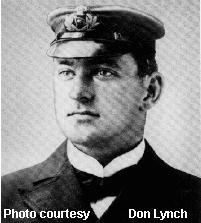
The Murdoch website's obsession with the supposed "mental state" of Chief Officer Henry Wilde is the result of the webmaster's predisposition to "prove" that Wilde was a more likely candidate for suicide than First Officer Murdoch. Although there is nothing wrong with attempting to establish the likelihood of this possibility, it is nevertheless incumbent on the webmaster to present his readers with a full spectrum of information which bears on the subject. We have already mentioned the webmaster's propensity for painting Wilde in dark colors so as to "condition" his readers to accept the premise that Wilde was a natural candidate for suicide. Let us look at some of the other claims that the webmaster has made about Wilde.
ANALYSIS: The webmaster's above speculation (made without benefit of the slightest bit of documentation) is just that -- speculation. Nevertheless, his musings about Wilde's mental state and supposed "poor performance" are clearly intended to cast the Chief Officer in a bad light
Interestingly, though, a counter-argument to the webmaster's premise can be found in the unedited version of historian Don Lynch's "Titanic: An Illustrated History." Regarding the importation of Chief Officer Wilde to the Titanic (with the resulting demotion of Murdoch to First Officer), Lynch says that Murdoch was 'a man whom he [Captain Smith] had not trusted enough to keep as his second in command..."
It is worth noting that the Murdoch webmaster speculates that Wilde may have decided to shoot himself because he feared he'd be prevented from assuming command of the Oceanic due to his involvement in the Titanic disaster.
Curiously, though, the webmaster does not speculate about how Murdoch -- who was *commanding* the Titanic at the time of the collision -- would have fared regarding his own future career at sea. (One suspects that Murdoch would not have had very good prospects for advancement in his chosen field should he somehow have survived the sinking of the Titanic.)
ANALYSIS: The webmaster has done his very best to paint Henry Wilde as an emotionally-shattered man whose troubled mental state caused him to be overwhelmed by the evacuation of the Titanic; this emotional upset supposedly forced Wilde to take "the easy way out" of his troubles by committing suicide. Just how accurate is this portrayal, though?
Not very.
Regarding the webmaster's allegation that Wilde was suffering from a 'delayed reaction' to the death of his wife, it is true that Wilde had previously lost his wife and twin sons due to complications in childbirth. However, the reader will be interested to learn that these deaths occurred on December 24, 1910 -- almost a year and a half before the maiden voyage of the Titanic. It seems rather unlikely that Wilde (after having had such a long period of time to come to grips with his loss) would suddenly take it into his head to mourn his dead wife, fall to pieces over it and suddenly become suicidal -- all during the middle of a sea disaster. Besides, it also seems unlikely that Wilde would deliberately orphan his four surviving children (ages 4 to 12) who were waiting for him to return home to England. No, the Wilde suicide scenario just doesn't ring true.
(Update: The Murdoch website contains an August 1998 update stating that the Murdoch webmaster no longer believes Chief Officer Henry Wilde was overcome with grief for his dead wife during the Titanic's maiden voyage.)
As for the webmaster's claim that Wilde was strangely passive during the evacuation of the Titanic, it should be remembered that Wilde was Titanic's senior officer and was acting like a good supervisor -- that is, he was quietly circulating among his junior officers and monitoring their methods as they dealt with the launching of the lifeboats; if Wilde approved of what his officers were doing there was no reason for him to bawl orders and otherwise make himself the center of attention, and this is why many people did not have vivid memories of Wilde that night. Nevertheless, the Chief Officer was present during the loading or launching of lifeboats #2, #8, #10, #12, #14, Collapsible C and Collapsible D; this would hardly be expected from a man who was as emotionally distraught and withdrawn as the Murdoch webmaster tries to make him out to be.
We come now to the list of so-called "eyewitnesses" whom the Murdoch webmaster quotes in support of his claim that First Officer Murdoch did not commit suicide but that Chief Officer Wilde *did* do so. As the reader will soon see, the webmaster's selection of "eyewitness" accounts is -- well -- curious at best. His modus operandi is interesting, too -- he groups all of the most reliable suicide witnesses in a single section devoted to the possible suicide of (surprise!) Henry Wilde, while he reserves his "Murdoch section" for presenting a group of supposed eyewitnesses who purportedly saw William Murdoch swept away by a wave (which, naturally, would make Murdoch's suicide an "impossibility.")
Let's take a look at the witnesses whom the Murdoch webmaster reserves for his "Wilde Suicide Section."
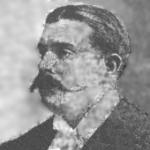
ANALYSIS: The above claims are absurd. George Rheims did indeed see an officer shoot an unarmed passenger before turning his weapon upon himself, but Rheims was not "floating in the ocean" when he saw the incident; instead, Rheims was standing just a few feet from the unnamed officer and heard him bid a quiet farewell to the bystanders around him before using his revolver to end his own life.
George Rheims was not responsible for the many press stories which told of Murdoch's suicide, either, because the only two places he ever mentioned the incident were in an April 20th newspaper interview and in a private letter to his wife Mary; in neither document did Rheims *name* the officer who shot himself. The webmaster's claim that George Rheims was responsible for all of the press accounts of Murdoch's suicide is simply unwarranted and is the result of a poor understanding of the evidence at hand.
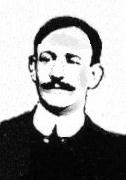
ANALYSIS: Contrary to the above claim, Eugene Daly did indeed see most of the event in question. Daly saw an unnamed officer shoot two passengers who attempted to rush a lifeboat, and a moment later he heard a third shot; he then saw the officer's body lying on the deck and was told that the officer had just shot himself. Daly told of this incident during a private interview with Dr. Frank Blackmarr on board the Carpathia, in a private letter to his family, in a personal interview with New York's Mayor Gaynor and at the 1915 Limitation of Liability hearings. The webmaster's caution about Eugene Daly's reliability is completely unwarranted.
ANALYSIS: The above account is untrue. Robert Daniel was not on the Titanic's foredeck when the bridge submerged and was nowhere near First Officer Murdoch (or any other officer) at the time of the suicide. Instead, Daniel was seen near the Titanic's stern by Thomas Dillon and subsequently jumped into the sea from that location as the stern rose skyward. Daniel's own account corroborates Dillon's story.
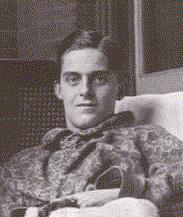
ANALYSIS: Thomas Whiteley never claimed to have witnessed an officer suicide himself -- he said that he learned of this incident from three fellow survivors who *did* witness the event. However, the present author wonders how many researchers the Murdoch webmaster interviewed in order to reach his conclusion that Whiteley is "generally considered unreliable." Besides, the webmaster's inclusion of Whiteley in his website's "Death of Wilde" section is grossly misleading, since the only officer Whiteley ever mentioned in connection with the suicide was *First Officer Murdoch.*
Now that we have examined the witnesses that the Murdoch webmaster claims are germane to the supposed suicide death of Chief Officer Wilde, it is time for us to examine the witnesses he marshalls in his attempt to prove that First Officer Murdoch was swept into the sea (and therefore could not have committed suicide.) The reader should be warned, though, that the webmaster's so-called "eyewitnesses" to Murdoch's non-suicide death will evaporate like a delicate mist on a summer day when we subject their statements to close scrutiny. Significantly, most of the witnesses themselves *never claimed* to have witnessed Murdoch's death -- it is the Murdoch webmaster himself who has attempted to use these people to bolster his own case.

ANALYSIS: We have already examined Lightoller's testimony and seen how unlikely it is that he actually saw Murdoch swept into the sea like he later claimed.

ANALYSIS: Harold Bride said no such thing at either Inquiry -- every one of his 1912 accounts specifies that he was on the opposite side of the ship from Murdoch when he was washed overboard. Thus far, the Murdoch website is our only source of information regarding Bride's supposed adventures with Murdoch on the Titanic's starboard side.
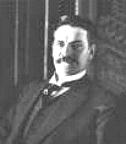
ANALYSIS: Archibald Gracie never claimed that he saw Murdoch swept into the sea; indeed, the "evidence in his book" makes it very clear that Gracie walked away from Collapsible A shortly before the bridge submerged and the resulting wave surged over the boat deck. Gracie never claimed to have seen what happened to Murdoch after he walked away from Collapsible A -- that claim is made solely by the Murdoch webmaster.
ANALYSIS: Contrary to the webmaster's claims, George McGough never testified at either Inquiry -- nor was he present on board the Titanic when Murdoch met his death; McGough had left the Titanic in boat #9 at 1:30 a.m.-- nearly an hour before Murdoch lost his life.
The reader will recall that it was James Cameron's film 'Titanic' (with its interpretation of William Murdoch's alleged suicide) that was the original cause of the uproar among the present-day citizens of Murdoch's home town (as well as the genesis of the Murdoch website.) The Murdoch webmaster has blasted Cameron's credibility by quoting what purport to be the sentiments of Don Lynch (a leading Titanic historian who was James Cameron's historical advisor on the film) in support of his contention that Cameron's depiction of Murdoch's shooting of two passengers (followed immediately by the officer's suicide) has no valid historical basis. The webmaster quotes the BBC's Independent Teletext Borders service for March 23, 1998 as follows:
"An advisor to the film 'Titanic' has said he warned the director against inaccurately portraying the Scottish first officer as a cowardly murderer. Historian Don Lynch said the screen character of William Murdoch is not backed by any historical evidence."
Although the Murdoch webmaster might be excused for believing the BBC report to be accurate, the report is nevertheless untrue and does not accurately reflect Lynch's thoughts on the matter.
The present author has long known that James Cameron based his Murdoch 'shooting/suicide scene' upon the eyewitness accounts of George Rheims and Eugene Daly plus the multitude of 1912 survivor accounts which allege that William Murdoch (by name) was the officer who took his own life during the sinking of the Titanic. The certain knowledge that Don Lynch was also familiar with these accounts caused the present author to wonder why (or if) Lynch would say anything remotely similar to what the BBC quoted him as saying. It seemed logical to ask Lynch for his personal opinion of Cameron's film portrayal of Murdoch, and Lynch was kind enough to reply to this query.
Question: Did you ever 'warn' James Cameron that his film portrayal of William Murdoch's suicide 'is not backed by any historical evidence?'
Lynch: If you want to do so in your posting, you can say, truthfully, that I have continually defended Jim's right to put that scene in the movie since there is not proof that the suicide didn't happen, despite my feelings that it didn't.
Although the Murdoch website undoubtedly contains useful biographical information about First Officer William Murdoch, by this time the reader also knows that most of the information the website uses to "document" a supposed non-suicide death for Murdoch is inaccurate at best and downright false at worst.
Historians would do well to exercise a great deal of caution when consulting the "suicide information" which appears on the Murdoch website. Such caution might well save legitimate researchers from the future humiliation of being accused of shoddy scholarship.
With that final caveat, here is a link to the Murdoch website for those readers who wish to investigate the subject for themselves.
Now that we have highlighted everything that was *not* said in 1912 about First Officer Murdoch's death (whether that death be by suicide or not), the reader might like to review a large selection of statements that *were* made in 1912 in reference to Murdoch's death. There is no better way to do this than by visiting Bill Wormstedt's Titanic website. Bill is in the process of presenting every available reference to Murdoch's death that he and other researchers have been able to find in contemporary 1912 sources. These statements are presented verbatim and are subjected to close scrutiny so that readers can decide for themselves just how strong the case for Murdoch's suicide really is. The link to Bill's site appears on the first page of this website.

To repeat a statement made early in this monograph, it has not been the aim of the present author to 'prove' that William Murdoch took his own life during the sinking of the Titanic; indeed, the author's sole purpose has been to correct disinformation that the Murdoch website has presented in order to further its own agenda -- namely, 'proving' that Murdoch did not commit suicide.
In correcting the Murdoch website's factual errors, however, the present author was necessarily forced to rehash a great deal of that website's speculation about the supposed mental state of Chief Officer Wilde and the reasons why Wilde was allegedly more likely to have committed suicide than William Murdoch. Even though the above reasons do not hold up to close scrutiny, it would not be fair to Wilde to conclude our discussion without examining reasons that *Murdoch* might have had for taking his own life that night as well. The present author will attempt to outline these reasons in the form of a 'mental checklist' as it might have occurred to Murdoch while he was working to evacuate passengers from the sinking Titanic:
"Captain Smith entrusted me with command of the Titanic when he left the bridge earlier this evening. He knew (as did I and all the other officers) that Titanic would reach the outskirts of the icefield at around 11 pm. Why didn't I consult Captain Smith at that point? After all, the Commander had a right to know when the ship was entering the outer fringes of this icefield, and perhaps his judgement about ice visibility would have been more conservative than mine; maybe he would have ordered a course alteration or a decrease in speed or taken *some* action that I didn't take that might have prevented a collision. As things stand, though, *I* was the person who decided not to consult him; *I* was the person who decided that the situation did not warrant any alteration of the ship's standard operating procedure; *I* was the person who was entrusted with the safety of the ship and her passengers, and *I* was the person who 'let the side down.'
"The Sailing Orders posted on the bulkhead behind me specify that 'No thought of making competitive passages must be entertained, and time must be sacrificed or any other temporary inconvenience suffered, rather than the *slightest risk* should be incurred.' Even though I thought we could see all icebergs in time to avoid them, and even though this was SOP, I was nevertheless taking a calculated risk in maintaining the status quo, and -- according to the Sailing Order -- even *calculated* risks are not condoned by the Company.
"The Titanic will sink in a few moments, and two out of three of her passengers and crew will find themselves floundering in the ocean when that happens. Nobody will survive immersion in that icy water for long, which means that roughly fifteen hundred people will die tonight as a direct result of actions that I did -- or didn't -- take.
"A moment ago I shot two unarmed passengers who disregarded my orders but who, after all, were only trying to save their own lives. How can I live with myself if I should happen to survive tonight's tragedy? In any event, my future career as a ship's officer will be non-existent -- what company would ever hire a man who was responsible for losing two thirds of the lives that had been entrusted to his care?
"And what about my wife Ada? How could I ask her to live with the shame I'd be certain to bring upon her if I were to survive? I can almost hear the slurs that would be cast in her direction: 'There goes Mrs. Murdoch; her husband killed fifteen hundred people but was careful to save his *own* life.' How could I possibly ask her and the rest of my family to endure something like that on my account?
"I couldn't. And I'm holding a Webley in my hand...."

Although the present author does not know if First Officer Murdoch took his own life during the sinking of the Titanic, I can at least understand why the thought of doing so might have crossed his mind.

Note: The author would like to thank Bill Wormstedt, Tad Fitch and 'Nefarious Dave' Billnitzer for proofreading the original version of this monograph and for suggesting additions and improvements to the information it contained. Be sure to visit Bill's and Dave's Titanic websites -- they're well worth the time you'll spend there.